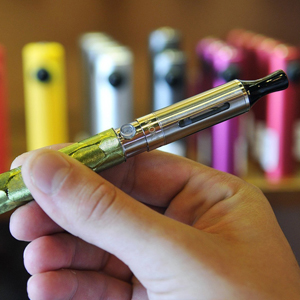
According to the Centers for Disease Control and Prevention (CDC), adolescent use of electronic cigarettes doubled from 2011 to 2012, with an estimated 1.78 million teens last year reporting use of the products.
The devices, commonly referred to as e-cigarettes, are nicotine-containing aerosol products, almost all of which are unregulated by the Food and Drug Administration (FDA). In the absence of federal age-restricted regulations, numerous states and cities, however, have passed legislation or ordinances barring the sell of e-cigarettes to minors.
Culling information from the National Youth Tobacco Survey (NYTS), researchers determined that 2.7 percent of middle school students in 2012 reported having ever used e-cigarettes, while 1.1 percent of current junior high students reported regular use of the products. During the same timeframe, one out of 10 high school students reported having ever used e-cigarettes, with nearly three percent of the population reporting regular use.
In all, nearly 10 percent of teens who reported e-cigarette use said they had never smoked “real” cigarettes, while more than three-fourths of regular e-cigarette users also reported smoking “regular” cigarettes.
The results of the NYTS reveal that regular e-cigarette users may not necessarily be using the products as full substitutions for “traditional” cigarettes, with three out of five regular middle school e-cigarette users and four out of five regular high school e-cigarette users also reporting routine tobacco use.
A CDC spokesman told Youth Today that while NYTS data does not necessarily demonstrate a link between e-cigarette use and traditional cigarette use among minors, some advertising for the products do appear to promote dual use of both e-cigarettes and “regular” cigarettes.
“If you look at how e-cigarettes are being marketed,” the representative said, “they are being marketed as something you can use when you can’t smoke cigarettes.” Additionally, the more discrete nature of e-cigarettes — with a less noticeable scent and no need for lighting — may make the products desirable for younger smokers who may frequently find themselves in situations where they may not be able to get away with using normal cigarettes, the source stated.
There is “tremendous variation” in the contents of e-cigarettes, the CDC representative said, because the products are generally not regulated in the same fashion as traditional tobacco products. “There are, I believe, more than 250 different brands out there, and so the constituents of one may not be the constituents of another,” the contact said.
FDA and independent testing of e-cigarette contents, however, have turned up potentially dangerous chemicals, including diethylene glycol, genotoxins, benzoic acid and butyl acetate.
The American Lung Association (ALA) has also been critical of the lack of regulation regarding the devices. Erika Sward, assistant vice president of national advocacy for the ALA, recently stated “there is no way for the public health, medical community or consumers to know what chemicals are contained in e-cigarettes or what the short and long term health implications might be,” additionally calling for both full FDA oversight of the devices as well as ingredient disclosure of e-cigarette contents by manufacturers.
In response to the recent CDC report, The ALA also cites studies that indicate the presence of several carcinogens in secondhand e-cigarette emissions as further evidence for the regulation of such devices. “While there is a great deal more to learn about these products,” Sward said, “it is clear that there is much to be concerned about, especially in the absence of FDA oversight.”
Dr. Jennifer Pearson, a research investigator for the American Legacy Foundation’s Schroeder Institute for Tobacco Research and Policy Studies, has studied electronic cigarettes for the last two years. She said she is not surprised by the CDC’s findings of high rates of traditional tobacco use among youth that also use electronic cigarettes.
“What I imagine happening is that it’s just the same type of kid that’s interested in smoking who is interested in e-cigarette smoking,” she said. “They might be a little bit more sensation-seeking, they’re a little bit more curious, they’re a bit more risk-takers.”
Pearson said that current research has yet to fully determine the possible short-term or long-term health risks of e-cigarette use, but early evidence seems to indicate the effects of electronic cigarette smoking are much less harmful than the effects of smoking traditional cigarettes. However, this may not mean the products are entirely safe, she added.
“They are certainly not without risk,” she said, “and the variability of what actually goes in these products and the chemical products they produce vary quite a lot between brands.”
Regarding use of the devices by teens, Pearson said a major concern is that young e-cigarette smokers may develop a nicotine dependency via the products, which could possibly lead to minors turning to traditional cigarettes to meet their cravings.
“E-cigarettes aren’t that good at delivering nicotine,” she said. “So if you really need that nicotine kick, cigarettes are the way to go.”
While occasional e-cigarette use by youths may not cause significant, long-term damage, she does believe the accessibility of the products to minors may be a cause for concern.
“I think what we’re concerned about is that these products are new, and interesting, and different, and maybe a little sexy,” Pearson said. “They could be ‘bad’ and use these without the consequences associated with smoking cigarettes. And of course, e-cigarette use is much easier to hide from your parents.”
Photo credit: DIEDRA LAIRD / MCT Direct





























